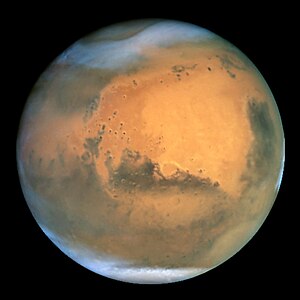 Luna, officially The United Federation of Lunar Communities, is the Terran Confederation capital world and home to one of the most populous cities in the Sol system: Tycho.
Luna, officially The United Federation of Lunar Communities, is the Terran Confederation capital world and home to one of the most populous cities in the Sol system: Tycho.
This world is the principle natural satellite of Earth, the major habitable world of Sol (it should be noted for non-Terran readers that the TC does not follow the convention of naming their systems after the major planet, instead choosing to name the star and then using that to name the system), and was initially a colony of a defunct world government known as the United Nations prior to the full onset of their World War III.
Tycho was founded by these early settlers in the very late 20th century of their old Gregorian calendar. Due to a rapid trend by various nations to develop and eventually implement orbital offensive and defensive weaponry, the UN decided that it would be best to strengthen the treaty designating the moon as neutral ground and property of all Mankind by establishing a civilian colony.
The plan was put forward and on 10 July 1997, the first supplies capsules were launched to be followed over the ensuing months by various payloads of materials the settlers would use to build their colony. On 3 February 1998 the first of three shuttles were launched, carrying engineers and workers to augment the work already being performed by robotic means in constructing the habitats and homes, and work on the three large transports that would carry the initial 600 colonists began. On 19 November 1998, the Moon’s first permanent residents stepped off of LT1 “Pegasus” to be greeted by, Damjana Phillips, the chief of Lunar Construction who would be returning to Earth with her crew when the LT1 headed back to earth in December.
It grew rapidly as a major stepping off point for some of the earlier solar colonisation efforts through the 21st century and even faster once the wars on Earth began reaching a crescendo, especially for various religious refugees.
When the peace treaties that would end the over century of warfare that was WW3 were to be negotiated, drafted, and signed, Tycho was chosen as the place for those government leaders and representatives to meet as Luna had taken on the role that Switzerland had in previous generations. During these negotiations, known as the Tycho Conventions, the Terran Confederation was born and the first Confederate Congress selected.
Today Luna houses many major cities, is a central hub of Terran culture and fashion, and various of its principle cities have taken on roles that had once been held by New York City, Paris, London, and Los Angeles. The Confederate Congress meets there in Convention Dome, and the various bureaus that maintain the confederate government are also housed here.
People from Luna are often referred to as Loonies, a term extracted from old science fiction stories, and also one used to describe the fact that many Terrans don’t see the people who live on Luna as entirely sane. Loonies, themselves, prefer the term Lunan or Lunar with Lunan being the official term by an act of the Confederate Standards Bureau in 8.3.34@3.23, though no effort to curb the popular use of Loonie has succeeded.
Lunan culture has reminded various historians of what is known about pre-WW3 Hollywood, including their argument that the Lunan accent is similar to what was known in the 1980s as Valley. However, unlike the Valley accent of that bygone era, there was a heavy influence from French, Indian, and Japanese members among the founding settlers so it should be noted that similarities to many other accents exist and the Valley connection is largely a matter of opinion; certainly their slang is not as much a match for that late 20th century sub-culture (it should also be noted that this is the accent favoured by all ages, classes, etc. of Lunan society rather than being a youth sub-culture as history tells the Valley group was).
Luna thrives on the modern. Nearly all interstellar and extra-Confederate goods are processed through Sol system and Luna is the central port of call for most of this traffic (Ganymede, Mars, and the MJ-trans3 Station sharing the remainder), and so many things not found in the rest of the Confederacy can usually be found here. Trends and fashions come and go by the month, even by the week or the day. Certainly by the year. It is the greatest insult a Loonie of any age can give someone to say they look ‘tyrd’, ‘out-moda’, or ‘so-yestard’ or that something they said is ‘from an hour ago’. Lunan hair styles change more often than the weather on the blue-green marble that hangs in its skies, LunaPop is a musical genre that thrives on technological instruments and software aided vocal or audio effects and strives to break the mould with each new song, the stereo-cinemas are crowded by the latest special effects thrillers, and anyone caught reading a book, even off a datatablet, would be laughed at mercilessly to the point it is joked that being caught with an actual bound-paper book on Luna is grounds for being thrown out the nearest airlock.




